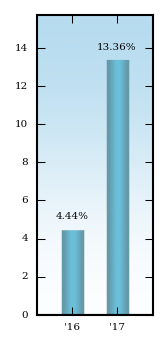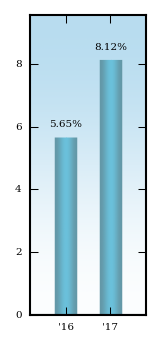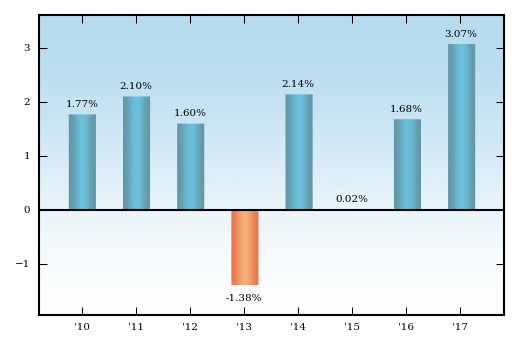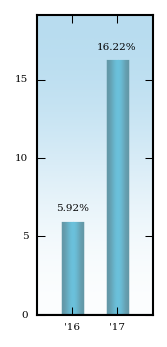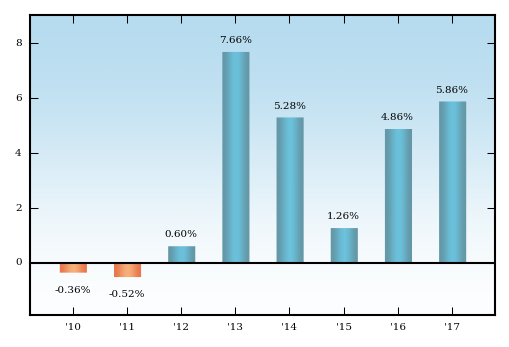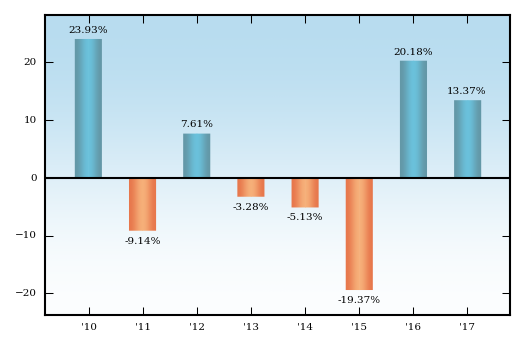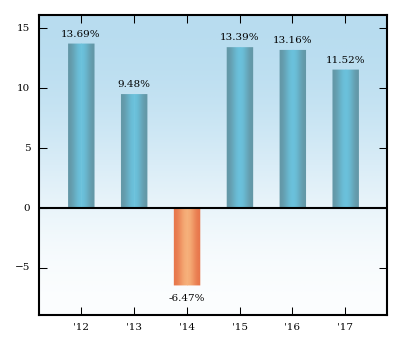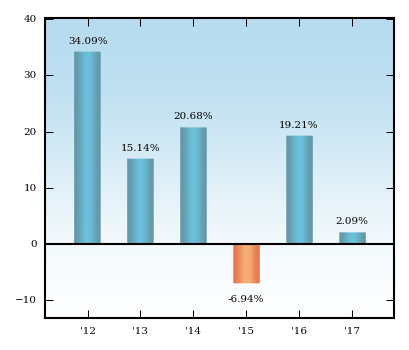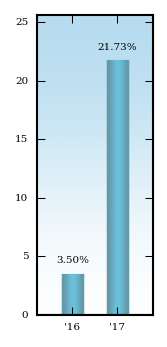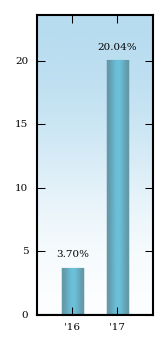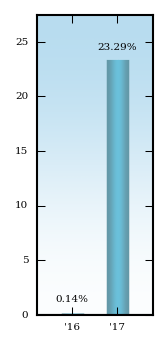'5QK]'["8%@A=QW&]870F=]+^)[OK$%1XO4)T0D\)A3@*E!ARS4
M;_IS9,'36/0(0?UTF",$=MBL7@9";%JA#.[_8L\7;_[4'KSYPMW"EX!,2!!0
M8=Q'_NB[]<%_LO[NN]0^7"=:6K\[T]EZ_E /E'6H6Y.0F #^Z1!WO"T:MHM4
M+Y%.2\-&ZM;VQH%CSZW[KW?6MWN+WZV@AWOUWG.#>U:CIU4 &A82H@"V)E"-
M@M"PGA0%P6=/F#OTR:"E86LARN F=&SKBSUR)LZHJAP^#_]-1I'S2([@*-%[
MI!MK.!6U5E3G\KS-ER265<\"!K"L>A-A ,NJ9SL#6%9])JB;90V'@)I9UG$(
MJ)ME#6=_!K!\9EK6<;QG ,OGMA31<*BGF64=1WB:6=9Q9F< RZI/Z71/4AJ.
MY_2SK/PHS@"6SVQ>UG'H9@#+9[9?UG&2IIEE'0=GNK6LX1A,-\L:SKD,8/G<
MW)>&XRP#6#X_6U9^3B6;Y2^!0VE8/M"!?W4A4<*XPZF'&;'>Q][8"@GY'EK.
M6@(!"6,W"JUH9D>4[H#^>P')"R^'9 ))\1-"A[?I#\B/!?%"$OYD38E' MMU
MEU;DT_>(M0B<$6$/+5DRQ(($]-TYI-;_Y4_-]AM_8CET"#H^"=PE@,.!_@T7
M[.6\RCO6XL%Z"8_PE(M!J]5X\VW]#?; ZE?--S]=Y:EN6S^R=:AF+CH*';+*
MP2-2G9I=T'&H;J/R\8ATJ&9== PZ%"HWCTA_:LYTCT%_&Y6GQZ)!94?49FM0
MK)P]$M6I.VHW6W4;%<#'HCME.0,%=1=!Y?1S:MNC*6M'2TQWFYK*JU<^(J49
M97 :E+9597TDFE.7O&&VJ]RI%C\B_>$V/:/J_5CTIRRMYBCTEU.]?R3*5))2I*OS->B>N.'$>D.Z.VB/IT=W3K&'4)D09/?ZSC
MQ>H:&SJ,Q>X2LY++Q*QNX\]IDW;,_)-S2;M+>Y:AU>O8[#Z%'
MS=$J4EW*KL&*K-9ZYT@TK2Y3V9@%THY>\UL&W?K!PH?<-WXX'9'.C%H.J=?91J.F(U*;41.E>K5EMIRWKRG6\6A.48F"L9K+
M:N6E1GOO.%/FM_UZGZHAH3@$*4>)0G/+2S;9D\*WXLHX8_A67-!L#-^*RP*-
MX5MQ*S S^%;?#\P(OC4T!3.#;_6=P8SA^QSUK:%'F#%\G^6Z17VW,"/XUM R
MS B^-?0-,X9OQOC_906##45KYRDJ%
M3-\YP23'W,N_9A^>FDMZ/^="?OG,%ZR!V>^.[;"
MF1ULBL]Z*9Q$WK-?;YX_PC$G;__F!Z&UB(/1S X!+_?)MSS+ME8)!B$9Q8$3
M01D7^4&?]*;D(O.W=ACZ(X>7#?F!Y3^2X)+2=#GR8\A8@ /;<7K*&B[#B,RM
MIQD)2#HL< G/4%$$_MR*J'196B'\^9+8H]D%)4MDC5#ECNU@F71M$IED'QL2
M*XS9Z2I\AZL;'A\&_G<"==N,E)$_GSMA2*D.+ ,FCPR5(TPF21[DF*)&6
MY\,I],2EWZ2/.1X3.M=F2")KPE+%A\3UG[:/>7,A*AO&JA+1$,8(XQIAK*H0
M!6&,,*X1QJI23!'&".,:8:RJ.R'"&&%<%XP5MFA$&".,:X*QRG:5"&.$<5TP
M5MBY$V&,,*X1QNB-$<9'#F.5C5T1Q@CC&F&,QQ\(XV.'L<(VOPACA'%-,%;9
MX!AAC#"N"<8JNSLCC!'&-<)856]KA#'"N*Z F\(&WPACA'%],%;6XAQAC#"N
M$<88-T88'SN,%3:^1Q@CC&N$,>8;(XQ/ ,88<$,8'SF,55[I@#!&&-?EC17>
M5X$P1AC7!6.%5W0@C!'&-<(8MW@(XQ. ,:Z-$<8G &-<&R.,CQ_&RJ[V01@C
MC+-AS 0!6B4!=(>[M1=,F/(:N+WRX.8GMQ24"S6S$RBW6&.[EPS."]L96V,G
MH.)REURM%,"!<*'53Z^S6MU)H7ZPC_I//K>>A&YN@%3)+GET5B#@)D45FQI*
M8J6A[3+,4KCZ' ;;>-Q&0+9VI:I_S_8>U7_:ZM]S@(_J/VWU[XF*H/I/6_U[
M&E2A^D]8_?L;.Z'Z3U?]!1HBH?I/6/W[&PFA^D];_6C]9ZO^ HUK4/VGK7X,
M^YRO^O?]9JQ\W?F>K_@*%U:C^TU5_@8)D5/\)
MJW]_(:\.];-L^D,@ .^I8>-Y'#!"CA +!JX#JV$! 5$-$ 8N#1 0.@%AX&(!
M :$1$/MJ'1$0QP6(SPL"587>-*DRK*%T4%+YZPH)-YX74ZTP&:W(MU+ZK9>[
M5;!0 0MEH-:2V(%E4V%:]+T1!88])6D![*/MQNP?A;##I)LG/,GR5=-ZYWSE
MJZ9[[?G*5TW/G?.5[Y[R+91O%?DJN_C^/.6K[D;V,Y6OLJO"SU>^B-]:_:^B
M9F?G*U_<7]0H7V77T9ZG?-7=DWJ>\E5W@>?YRE?-S9+G*5]U5QZ>K7P5W<5W
MOO+%]6^=\0=5MY>=KWPQ_ENO?'%]5I]\U5U$=)[R57=#SIG*5]G5+>X#CEF_SFW0][OG#)[X0U^C#;7S[#B[;E^AA6O)_0SK#B!23/#ZC.*]#*L(<5',\/J*C/V]#+L(9$"KT,:\ALT,^PXE0#S=.2^K-_[0RK/HS7S_!9S<,:CJOU
M,WQ6^V$-![IZ&=9PPJI9P^J//#4SK/X,4C_#Y^6TU)_2Z6?XW&Q8]3F69(8/
MO^);P_7([*YOP@FWZ%\=2J@W)F.XCGI&W 5K%@%'=R-_OH >$G!"-_+#" [H
M^-D<*#>Y9IH=!3XYT2S_,9_^)K F],'PRMH8?>Q3CN#VZLC^3H 0W[)'[&9N
MWK$BO1+;$J_#WCA:?)H13[PLW ^LD+BN(]P;OKZ#7.A@(;D_Q]Y>;P^4A)1K
M.PSCN7A&RJ7%J/G?S<8%A<6&=*%9![O1FPX-AZ>./P:MC9V1#?=]0_>.",00
MD#$A<\MVW=51:B(#.@Y\@*J9B\,/5Q\"C:Q(8R38;NCOT"B>REHS=HS;_3,=
M,8H#3SS?9;0DPP'QZ?7GS?X;JHK5B?'JG#@@FF [*;Z*E4YXSSU5< I2 EQW6IS&$,GZ%BX<-O?<]=7O F)S,_=L<,
M<4, E13H0?!>N4F43-Z9)4P@Q,Z[0_XA_H4GQMZ0O'[6FSU[V[M,QZ:X'> ^QV;5Y=02
MK!9R;-9Y.36K%H?&_51!IV;5YM 8&66&#NUX'!JNT-"AH4-#AW82#JU )3LZ-'1HZ-#0
MH1V/0\.<9G1HZ-#0H9V&0]O?B08=&CHT=&CHT([#H17H-(4.#1T:.C1T:,?A
MT ITDD.'A@X-'1HZM.-Q:'LZ1:)#0X>&#@T=VG$XM *=8-&AH4-#AX8.[6@<
MVKY.S^C0T*&A0T.'=CP.#?/0T*&A0T.'=AH.;?]-#>C0T*&A0T.'=CP.#7O!
MH4-#AX8.[60<&J9MH$-#AX8.[20<6H&;U-"AH4-#AX8.[3@<6H&;$M&AH4-#
MAX8.[4@)
MRT#W;#5+>;!\2!;#G-.3T!;"G1N3T!; G
M?'SZ MAS(?")"V#_'9ZG+8 "=_Z=N #VWQ%V^@(X:P04N(/D] 5PW@NA_3W.
M3UL !7HBG[8 "O10/7T![.FY>-H"*-"C[>0%L*^GT^D+X*S7 05Z1IR^ ,XZ
M'E"@)O6T!5"@ANVT!5"@YN7$!; _1_[T!7#>3G!_#M[I"^#GYPEZ&5A387FB/V+DP.RJ]L,)X-+/L4$PKN."I!$YD#6/Z$APV
M0R)!2/\[B@,G0+IH_8/2AYC@/&=I#[0_[#A
M9\2%(V[+A@?M(9SS\PP+=LH>DE0L_$ ;#M3AA#P@$YSK&''?S<^8+RYY,Z-ML_*R$ /$H_9:06Y GVBVFWV.G].TC]X%L0C3R9YM-V8L"P5454@"R?D;Y,?(S<>LQ0(
MX?'U6 (F@%+G$<[G VM,7/I7R"=@21*)FOP)&]WQ+K]3%5LC2!1@A_?T#4C;
M2,_RA425#1:Y,J_VF6RA _V#C%;-V@6-%HT6C+;;0J.58+1JHBYHM&BT;*;M
MHM%*,%HUFV0T6C1:JMU^'VU6@LVJ279#FT6;I=KM--%FJ]JLLOQ,M%FT65@<
M-]!HJQJMNISB XP8L.>UT9BPY[[:PVLU9BJXP4Y?9J);;*1C\R
M>U66 H_V>N[VVEH?\Z"]5K!7G%_17M78ZS7::_5-K**$HG.V5]S$KHRVW;K&
M3:P$H\5<"C1:=3-M&X]E*QNMLD+.NHR62IEW8'*\, IBZ.*3;K1\9 (_L[)?A+X(?05S .UQ[%FMF\
M'>&21 Q?A#*XDAD=3*/UJ>G=@-:'UH?6IZMQR#E;W]$M54\#V8HZPB"RCPC9
MM6S"KO>D!< O2FS"-AX_HXV8NAY&:++G;K+-1@]M5DJZK*JV6VBS:+,8ZY1@
MKECZB>:*YGHTYHI'$VBN*LQUSWH8K=6@_IOG;*W'>91Q"A%59=U5SQG>.!FQ
MCB%8&%G97)7U D9S/2)S/86)2%F39T0V(ELULG$'@<@^363CY@&1?9+(5M1O
M'Y&-R"Z.['NXH9Y,ET=PLWK@>"-G095QYSV2,(*Z02LAG^(S]RZ)+0[E\*[Z
M^AR3>%=]?YI)O*N^-<@DWE7?HFX,[QHN4#>%=QUWIQO#NX9KTTWB_5SUKN.R
M=)-X/]NUC88KTDWA7E=^$;A+OYSJ_
MZ[C_W"3>SW7_KN/6-5QS;A+O9^OK-%QN;A+O9VSO
MRJ\TKXWW3W8 QWJ/I'R#T/U';-'(LL.0P+O+MR8)_7:>K
M;(.4_JVO,9(\/R+;W_FTJ8J7C!I@^<*"0=AWX2F6;1"0"0D@G3SR*7DN:(U:
M/)41)5_XZC8GB\ ?QZ,-I5-A,)(V:/FR00O'(3-38,QV0S\!.LB/Z@R2&>8^
M)6OB>!0PCNV*'7HO$E& JH=QQ#(17&?N1)S\21S%D'H!3BJP@3@&:D@D>;(7
MECT-"$DZ_8J<7HA\OE^->[<>=X.%M1OEW++_R'!Q@\(NCLP7KK_<\G,+ZG\H
M/XP>.HH]9;R*^ED97.L-3QJAQ@*B%'^^=CN6O:!*MBETJ$>AM' 9@V"_\QX2
MZQR2-'\DQR]Q3TOQ-"94WOZ"?FFX3+V ]>'#[09^M[Q#:@J0T^*X3I*ADKY\
M,WYT0C\(X2LYQ1LB1_QI1L]+>%@8-OG2+EIWW$M(R/=P4Q;"=X8DLD6A0\(1
M)! E(@H(3UIZZ5R1*Z"8SB;)(ZFO$Q^C_YR1\91P-\X?YSE"WJ4S=OQPZ8U@
MCAY=@$9C+R"NG5@#QT!@A=^I#_PI\TL<1]8C=8H^G;/8[QD5;,X4!,>038G>
MXC5=*.P(+23I*Z+_ I--$YP$LW5];_HJG%$A6-S!7M"W1H%_D4 Y^$XG5X_$
M=##WPJ(0\J++<4"A3BUIXOP@XTLZ@#^G\VTP="*HP*%/S0D8U=3BKW.?QSU]
MN%H:<7?L45\7AQR3:PFEX@MY_MC*],8^?0\86+LM0:S<9V>9@O@BEX:H#7MW
M3A=FL2T2'/X=VTI7-L*7-'NG'28$]3-2AE0'3.$\OX\IG:Y['%Z=1(69SLQL
MIN*Y:0M8&''G8W^'3[/W-]Y*DN>\1"O4%%9&2GW8A*[L)H$_!TH"NG)+&IHG
M,S9=%7 /9J<3.P4@IPSR#V' K;3#],?LH8VIEJT](S*:>-/H&M5F#FQ^8V2U8.(2!TB4_74"&D9X;)2VQ(MD9=4$.A_I(-3:G>^&B"#YLEQZYK
M ;V5/,2'-7N =$JPIL0CU&&[R\04R0]JL7%2!
M1Q%+IQU!DO#"'M'/_/RB\8+]>V&/Q^F_$ZZ?G'$T>VTU&XT_OUA_"KX2I(\\
MDH#A/.4M\A?K1V%SS!X?K[XXHS/8)0Q-7@,. WM!IWL^\B5]ETGLC<7%W6Q2
M>3<;_3];M_3KP\"YL'XGU(!A0"IINO^\3,2=(=WDA[!@@V]UKKJ+:!4$@.^7
M##+P=U/'U>.1 7AW%2:(QL\P7@N/ DW-7J, %8E"KP=_KDGJE27\CBU5WK*E
MRN;B:[D G+E+815APVID2'VH>@R\NA[7VGKG48
MT54?^>]_Z6[:(VPQ2YW;9,T">YJ^/[(73@13$=V;C6"[MU[U62_A,]8CE07[
M"RN63G[ %Y;)GCH@R;:=RYK_;D. R49_G]P")_S.%@>PVB3!3^(*=.:[2>!P
MOH#PC_ K2*N''29=P,1)F3:0Q6O 4X5",0%P9_%]-T!DO:NCWZ!(=284150?
MR5ZNQ&;S%G\RQJY\.>Z5(+M\6$*@*'HL*Y/
M,17.G F+:PG4+2'<+KTPWG1[Y?W>?N,^-;Z[AAX@2HG4/1#"748P:U
M]KG,LT%L,C$UNO@+"/T@"7GP-O:B@+NJC2A>0J7HF9,=,C7VE(7UV[!;CV9T
M^Y6TK(&"*+;K8AX8Z&!KXR2NPY:B_CK*@\:,QGR4QOP>HDK6'8\JW:S6%]DV
MG031A.4!V_NF4UYD?R<0>*03-7P#6KRPC>/8F4RH9=.=-9TAF0E3-B9T1G<2
M,TYWDFE(;R/4)1Q!K&*"Z8/$V9CW&9&P)*#VZH01_T%R=,)Y@6F:Q>.L1Y]^
MPG'91I9'P\"F_3AB 8( ?!?S/FSAPV=XYNW2S1U:/%K\45K\!V$'E&GE8VBZ
M%-+187_@!,P"0C 29CAI$,83;($%D6S 4^S:T(5IRJNDB'$XO
M!%-*-CCIYH1NCUA8.0V4T%'F[*S+'\6AQ0J3V?[BDFTJJ/N@WZ(\NFQ+>!,E
M<2CJ,2+*\H6XTULMY_U)M-J?VE,;UB-T3W"9:":U\_Y.>9&R<
M6L _8>E""4^>_NG*NJ7F1;^?2<6*H14CB7 N4M$E9U8KX=%G!?GNA(W6U";-
MM0*Z/G\Q1'P.1!">T7I*K*37^A4_7#.R((*)+
M&G!8[+ET"4+_3:+1U4_@N/AIP@0\:NCZ(WMUAI.>_8GKG(MT7[-,MC]I^D1Z
MK+=:_(@!#9?8_$^PW&2Y-:?.:,X/TRI8\A$;\2E;[KF9*YM\/_$3\;V1AKU'
MKGSF@S-4"NRYX]$%S7^3!B.KA0Q;1BS#B,PAV4!,#J-3)RP#TF/_S>-Z<5>4
M;HAF]B.$-?]+J!]Y)F]BZ\R5?W?CL%6D3TP=$NAD"Y2)S1=9Z]RAW<6)]=*&
M-IL+NL7A\>;DU/:>C]@>O/EB=1L-?JK]T\4Z;)FNX+;6)IF+N70ED_@R"++0
MC=C'7(GQ' W6RH6G9"7/./\EO(GIYN9KE5OAT!7A*&%B[ 1DE$1LP >&Z?$E
M?[FJ-]245K Z7.0'^:'%$P?]]&26S)V0).?@ZY/%9'F:-!JRIU.J#K9CMN?^
MQAEDR _&0VH).4M+.GDM7+IM7MU(#LOKC:!\JA5VH@L'UE&254G'VOSB2M\
MBXT@^I7UZS*Y49R9+T_96I_OIP2NQA(/5]FJO^! L. 5V5_)]V*5:;5*J*!6
MXO(V23 *F&UZ[#^:V9!V1Q4,888P324P.#U%2%Y=)5]1-&4<8B\"_]%A.9AK
MM@^273S
MX"3B&?%\&G@6TID0S@CG(X;SN\UBDE6DFN7@L*#:*DF')S*N(TVX9$&;.$F;
M>.]SP">9LB_?Q8&_(!?6#81 ;=<.G;0XL3UX8[VW ^N='48_H6V@;9R\;;#E
M#\P+D\1(%JLBZW7>%D(<(7[D$'^F) 3608AP1/B1(WP*"WN/'Y_!P?EEDJ@;
MD6!.QM",X!+^2C<&$2__](>4,)[3@O!'^!\Y_(5BP)?/EO?]A X?$7\*B'^
M_A!Q -UI)B[?D7X)_(BGT-"'US=1"<;P^1X# , /(8V0/@%(3UR?IX?R5AS038/URD!H([2/%]H?
M8\_A38U9XQ@$,X+Y>,&^,T(9FF?9B1I CR(\7Y#L'
M^0&A*Q+".Q\)IY]10&E K"/6CQCKMTEM/:2F .81S CFHP4S%'LZ\X7KP$T>
MZYY625^:K:)N&"B,%P*C_0YG=/.GO>1N@B.MF7;@6AC7^9YT8 [L<=K)CZ/@#7=D#_#] UW,^0UOMO75>QB(>N,W*7Z7TFK)5B
M(/0 8!77B6@81>L*_V52]7^1W>D_XWX(H3'2&(JCO5'T;,MKC772=&%O@=DF
MV' \)C5V_&D/_9C+(O.BC<7J(JK,JG/H=K6AS+%-5Z=TT]7.90KBI^DDM+[2STXZVH5IRQZX6
MXW"MXWHQ2UQ5XM5B>+487BV&5XN9=[48=@%TL O@J78!Q.OI\'HZQ=?3&=I3
M#2T!+4'U18W8X >/T/$('3L\(,+/#>'8X0'A?Y[PSZY*P+4-0O]LH(_%"PCR
MDP4Y%B\@UL\%ZUB\@& ^&3!C\0(6+V#Q A8OU%^\T,7B!2Q>P.(%+%[ X@4L
M7L#B!4.*%[*K#[9NUF94E"X_J._B<(YG0RX/Y\@Q[0)Q1I7V2\09%35<)%ZX
MCH'%9])U.-8Q8!T#UC%@'0/6,6 = ]8Q8!T#9F]C]O9!!]VL]-BH7"6T!+0$
MK.C!:KTTW:G0QBWA&/)\$GA]M-R8(9X3ST<,YNX@2,8V8/EY,IX4"
M25;!RW=QX"_(A74#9S2V:X>.+:25O;<#ZYT=1G@!)(+^B$&/E;^(\#- .%;^
M(OS/&/YXMSLB_KP0CW>[HQV@'>#=[@CKDX0UWNV.D#XQ2.?>[8XU[@COHX9W
MP0X\YE>KLX'-20'%.GFLD\=EU\FVLD\:R39U^TDD^R@=?W0^DNE&?D
MB,7REM9">3Z9"#6EJ@KE^22242QO8:$\%LJ?1:$\U+Z^2BH6TSKX+ EE%\E_
M6+^=72 _IJ ,0KA4CW[/"5B)> @ 8):;KD0]L9X::B5MV.G&KLVUQ6NXF0-8
MUWNG9>#<3V;4?D,(@%50NRZ;>F&D.?,4/EVR0,$@3'5TAJ9[9#*"VCWZ+6JB
MK@/5=S?1JI*.K^^HU5Z(TDHD#%J*2%JT;4]M\%A4%YRSBIV3"GFF;>)
M]?"T<@:Z44(.U3A?C/(V!^L768$%/,EJCLH5ON=?WL?(P,+W9_M-K!8KPL1Y
ML5X+P9+@2X6*>$;%\U7Q.Y7-M57$;VS!*N>BGA&0ZFJ>$MV13Q?X):KBK>P(AXKXK$B'BOBL0[X_.J L2(>+0$M 2OB
M\13]9$_1L2(>\7QR>,:*>(3S:< 9*^(1TZ>&::R(1]"?'>@+5<1C3C:B_/A1
MGE=R8'XF-N9#8SXTYD,KR8?N8#XTYD-C/C3>&U8T'1KO#<-T:$R'UI(.[5E4
M*UYT.0XH>C@1):\->\?>?\O>WWMIF V.<$@M+97*B#H@.OU"0F80Q1[WK6"X
M.V0Q%\PRE?]!IY+$Z?+7U\OT1)C@AX>70LI3ZD2%)&*APU%"Q,LAQ>?3,SOY
M9"8'YI[MB62Q9RAP70(9S5-*&-LET1%@QP3Q@ LZS_WWOW0&\0A3'ITU)VLV
MV-/T_>10&E:,U-WRN[>&3@2?Y#"&3UF/5";L+_0[JQ_P&2N91P*23%?BX?:&
M(),);I_\> (WN&H24'C]E-35)#1=6#/?9?XY232WA%^Q%&W@Q8EBWB:-D2:<
MY\! 3W0ZABO>Q&+-UT
M(YF.BT2C0KN] /SEGPM9V H5+6&Y@LC@FBV.R.":+8[(X)HMCLKAA
M.,)D<4R1/=<464P61TLX>TO ?"T\U#_)0WUL=8_P/V/X8\-CA/4)PAH3$A'E
MIX_R[;;>F(B(B8B8B(B)B(U6][HUP$1$3$3,341DME\R\3!ELVH^$S^!DY;3
MM..+,_.9,G,F&25[\R:M&G,F^5'YOKQ)12UD>5I-H;Q)-2UD&4$%\B;K:R'+
M1;(_;Q);R%;/F7S&2XK)).QX,4TU24Z@[:V.G-R#IU>9\7J=]&R2KY\$402$
M2ITOA#;QR1U5>FI+%QF/?-49)&YK-<(%P'^U0.-.$1Z\_7)7,)'P@3_-TN'8
MFW1:H&@*8.%!)<;]+\\FY5--R!>*X6P]VJ\4SG8,A'V@M :P.([X"?,%GY7G
M[)*WE?QMGI\GI)NQK(J0'=9;[*">/CGU_7%B&B1XA-_S+.XDGX*-/O/CD"61
MA2M.8$0J$3\ <3 =S2G09]133 +J'.$FBPMFE>.8):^$E#98UX&W@\&XGYW8
MO.TKD)N^S\GE"0W>2LSB<"P!*DGQ:%ZR]U(FV8D^^!%8-5J!SU,XFJWD*4B/
M"7=4]G7[,1B0;PFVC)UM$"*>1$.LY]Z[8.Y(Y&NK'RQ#0Y+(D[5I\E8A#9@4
MJ01A90*K"98NF2;54LA3C1F73[!:*>UD9&RF6SS-Z*)L)1F!9\&Z>5*CO4I'
M@X3I**).+V(9):.90]*
MW\P"PL;B:,450^#:6^:YNPO1W[%5'6Q\AI#I \[N(O&CZ4I)1)>5(&N="\=#
M(6!5ZP&L" [/(^Y1F$!63A1L(94B_"8.TPTQ10,DEPI3#:4:9.5K5+!=@$#)3R"/,8&S'$@C@W&>6$ FS)N.Q,10P\P'TW$P">$,DQ#6Z3C;
MS=\Q'0PL@3?;-\D2\' +#[>PD1*"'D$O*QOM8C,5C4=YH00+L]+0#$[1
M# K>?HL@1Y ?+\B9KV?!*1)&U*]C/AHB^K@1?9L<53O'<#&Y(9E$QJ8/=1OM
M;A/3AS!]J.8^9L\U_)C3=1Y5WF;'CVP9"&_SS!?QW4(M/XKV4DN.5!7D!>7U
M4DO.X?!J:;Q:^FSR@K"76M5>:M6:IZTF@PV_*MPJ/77](?TY7+T\6FAA-0KPUW*E_ /V_/BI)_;
M]HQHE9@-.6A$8:3"_8U3?K.BG*\&-X7TVS9[FSHIU'6.3T$7U#?^(.-+R*E)
M+KUF$P7UGLLTR46H;93M!D4^)F0D\ZK8V$_8)UDZB-
M4Y')VX9LA4>@LU@&/]9SO-@\96?L3.BP#JPP63_: =<3^L\N(VV
M.8F%;)#TZ%"_3(4TA_9H::K/1?+E]9WC7%9<<.N+R),L-].R3$KW%:O6-PU220TS%LM46LM6N85:AC6.KQ:^D:9A7M&+9:>\GO&F:5ZAC&
MMXJ2NX99)3N&)?@X^:YA6S5D^V:SG99BFQW"K/SN8*O\T*T.87:E/F"6V /,
MWN[TM<4-(V&;(SDMP(K(SC248!(BIEZ=:^H5]@1#2T!+8 UDG+%1=H#GF7B>
M*>N$'B]'1W2?)+HQP19!?W:@QQ:FB.E3PW32!FQ=%+W5]@[;.2+"3PKAPL55
MB&W$]@E@.[,#+^:#([2/']I5>JM70;^^,S%L96I$*],21ZE*\^K;W6;#K+QZ
M:SNGGF=9*LNKMW)SZGFN=96\^GTYA7X<)8!=Y5U;8]]U[>"23AFLWU"4WA!M
M_V"3*,LQLY(($_+=DGC'MIT+C6Q_8Q_YR.W0G"SEYZH=>*Z@
MDHH',<=XPQWOR3=F)"J[W7U_-0*C9U61D%EW\&PI@5 &D!0 _+U*4]"DF*)\
M < -\_%_BSUBM1L7%CC;G%E"K(YI]O;6@3"*5J4%22(KJR-@F5RM[LJQ<:>6
M=)O+_^R>B]^9DC834Y,L1^7WON?5*:P2@]FMSN(%N@7%&<
M\65#^J]H%OCQ=,;24=G$P6C?JK*")&+(E^:YS>SF:/%:W#3?.5FR8+F&Y'(-
MYE=!./_T@^_6!V="Q,;J'U><[-1U?/KGA[N/&UZ)PI[-O6&2[0=&'[L19 _^
M_^R]:W/;V+$U_%=0IY(JNXK2R/>9I-X/'H\G\3GCQ,_(R:F\WT "E/ 8!!A<
M)#.__NG;ON%"4;9$0E1_.6O7@U#EP>R-.?@H;*$S5%>X[R.
MV6HR:R)]Z%B%8ESP1J0%ZSLFW<-;YDJ\[L%S5XBMP>^CD=\Z_O2@V;-5JK80
M@.RT4NXF#PDHT6AHAHE&S[XS&>7/%0D9XY'YY-G)BVB3QI4!$>"/FJ=6Z.P!
M0VOA8;]&_.'EVIJM>5_T1K?K?+#S26^T76-"!Q2$8A.G"UX5_5 O_0Q?+
M<\ENBELU%Z@K_,A6>#?E[8"7Z6M'#4((II- &@ON(>'[, HP&M4'998-9>ND
M7-"F#+!^']&9+M8/MS^-/LJO&#&K3;\7 EX0'H?12*+.M'X)'L*PAHPQ>("K
MH<=WDR@L.8
M:,M3NQ9OP,DP9_['\893?\?QV,P<9R1HV=4C&86LEGXS#(Q>PI*V5<7>4I2R
MXF_)TS%2^=?R.H6Q#8\B%,. 3]Y3J_&&DK2TZQ=P^L;8XHE?C_(1*W2K,X()
MTZ^+-$WZ.XJSG]_Z*L/KNDKG<4X9 M/[Z(#Y^(GIW!US/GXWG;N=$O9V68XD
M[:,]).QM:FQ+TCX:2]CC=1Z7M:-6\G_;XDN0X]@AM<\^T);T/C[RK_C(?]$C
M-=NOV?[CS?8_/]-L_^/+]FNR?Y+)?LSA[S7QS^Z!2_X/^Q7[2/S[:,!N)_(@
M#^"&\W\K'4 LKU("E!*@E !%T!5!?X@(NE("=-4_ME6OE !=^(]RX7,P>A,O
M0)>X+O$C6^+CQ !=[;K:'_AJOT6Z1S4@=-4?QZH_X=QLY.=F"7]'(E-'D"V
MWQ\=!VP0#/Y>2A@-Q-#"H@-1PFRROD\+V_K4.Z>$T4!ZM+#HT)0PSM0B+:S+
MC]H;)8SS-T(+B^Z3$C:\S#')+=,PRA+;:2 >0\P'#21IV'$W9?$&)#$:13]-
M_X\UWEURPH,/QY2O9(;P-Y2.I,83D@(.,S!^$JH[?!L>YY..ZME3
M,YZ[&\Z(K:9!W&2O.RRZZ'X8=-Y\W,0ZNV_RG"1@=R+0?3L/\";RG+ WF4!'
M/UZ(X(_7*&YX71 QP]MFAZ'?/7_UTXM#T>]L?KU+FY(<>W28_/J@]3%DACWU
M/K2\F&!3]/L?]@1EOJ'W(7\&/#DW=9-B#^9%CW)8E0MLLN1/(;>W6FZHT5C5
MM 5O'-BAY-,4U,KMLJS3@7ZK1$?"G[JIY T7L&_LMZ!FK&@FI%]9E9H^7DP>
M*PKP!A;$&Z@NN!O> IYI&IWAE;LFU.;*?%"J(H9## KX9GB>GJ9J:L
M"GUJO,%Z7:$&E]^]"EZ2#F$QT$&[JP9;EC0R0:&'4I,\F.EZQ5>9GE4T"NF'
M=EGF22JSP38D
MQ*Z6]#_D:\OWG */9Y X10.Y9[KN;BVIA6TU2-?]%F+ER'X?ZU(]N.0][N,.
M-,U@(8_P>+Z996E-P. R\\J6^@NZ2RQLV8$<^KC$E_8^CM?*&M^4(UB87SQGB'!6MW!H+U TTMLW@2V7DT_6@?EHL_#:/(,U2RW#
MP6&I:]#W8![-V?2[ZJ\,@TI!PVV.8?$(\4#!*ES6=/2&3?BC'/<
MF=N6MJE@$3'$ X18QC6]E+_V/)0A<*&1JDP[$0]-.L1]9ZN_>\RF0)@\HW7I= IR4)_RY-EVO3'[+_%(SUM@QXQFUJ90C"YO-V%(5^_VYC
M"B>\&_5)K!BX5=D5^>*!PX,+"@_=S]UU%AQ19D70C./&I/] 4W<5YSP6>PE]
M,=S=\]3O \TN$*R7>=80JF-:0!]P4_X*\V(L,UDK\KCI\\5S\$\L.-7S>&V$
M[)^J\D8TX[#,?//T2UHOJFSMNT"?["W.[77FWT2(U*OT.5@0]ER#, W"[C (
M$_\;+,UE!J: 3#'$)>07D!$7:++;!!5[9]>N-_B&_2.V2MR5=>:T@ST,NV S
M!RXT?!1IA.'NXOIL6\SZ@ET-#NNVAXF"@&T/%05KO(2!N;L;;_*WC/I;+[[\
M&>P!C 23 1]3B.7J/R,FFN'9^&M9)@Q&9; 1_QR]+\"4;MA.FM_";J-_>U?&
M.24'H_]%^.DVP51TNT#*.Y0TF-)@2H,I#:;4;YN*W_;FY?.#^VW'4IQV=WY;
M?SGV?38:S[?[;9FM6&-V $:0"?@W:1)U6I5RQA=_L;AXBO%(CC0;?* :2.LIQSX !?4;F'&C5.[HW&*':8O1"1](:P3
M)YL:APIF,2V0"YAX1<]R^(*!R^98P(\NJ6D3X:PE>)'K2$J-R5[ DEW&U0K^
M;08F5+PQ\149F\ [+MH<3*H8Q!4L/+A_M0G_#5S6=(5DILXU4=VNU[E4]49P
M3+)'RYF#>58NVS0/*\C?^N_PSDY U_C.J^@'RWU1[^OPWI?GYKB%"K.6D=H$
MC1O&4\.R,@/:YI$SKX;J4&GEA@'1S-%UXMKR?/[=QE6#=W.YX"@!NZ2UG)-G
M^VDMYV!UF[0%ZAG^;>:>CG-$0K."SW/;/^D#-Q!"=_H=H@88^O,)Y%N!\P_O
M_-T.9Q"66 2_/Q3I7+>@;L$];\&/64$4.T/'%*2LX\'!"?2'9Z_.HA6$POB_
M\;@3Q@#\UT]G< QMV .*;;@T=EII08=2VQ\NM?VC4%*W[Y<4\W8&9)V7#03O
M6*P*<<<"W=HJ+KZ(B,AP-"#Q%.P=2P,??M#P1NR&F,*U?1>OHWD?GFT_QK3\2K?$<6P)0\AQF^#Y
MJ[/9V=E95%_&F$(@5(%^)91PNQ?J["O_PP,HRCIWN5O$G"2FI.P6559N%6C'4;X>SS8;]*$2/+O]5=,INR@UR%GR[-[.$L=52IO('L#C6?C+HA84V
MB'_.80W1F^6(MD>O7_V1.$Q&K /_Y:-K^.LY(]8.&_^%UZ 4]9CH@5^N20T'
M2>K#\*,,PW!34S7UT$8<">(=-C/KU@P1&(HB903;"JN'I+IQ76MX(2.&-+T_
M/#_[T2Y,7#KAO[X\_2F:\[^.#)JY2)AP(AP(T6>F^(U6U&1UEY12!Z;([? $
M7G^1Y8QL_7<,?SV-QO.+YZ]?:$]T2CO?A*UAGQ>:2B -RWL"'Z:A?@[$-%5*II,<5?<(=X)@&
M#Z/&BV>L21WS6'['?WA/_^!;@\]56W=$MG]__^%S*!5=5OY]J4Z(TEG6\HWS
M4/S'3CT-ZHF.][:?T&@HV=A9Y[N*DM^03XQNE4ODQ*SF$S69\>B2&9Q/[&81
M?0/E'5 99PLWFE'43:B;\,XW81#RF(!04PV*JSY<7/43N>F;:!A*U'6NZ_PX
MUKER0G2_Z'[9#R?DCSX99! 2\<\5I8/H7M2]J'00W1*Z)90.HG20$3I(X_V+
M\D&4#[(_/LCAIOBV1!3)W0^1448)'SL249X]WT)$>7'ZPA)1#KL@'WIMYS8*
M370_]!F?IO2P*#0OS]ZPAYM+(:#0
M>'8AH7CJ@G'8@*!.B5=C[KN,23I^(H2/?WB6L-OIVA?HLOIY]V\:%V'MN6R:
M+RGJX0R7O7\;$^60Y_<2V_IAFAY<[?K2$+",*T4K=J7J
M#I.&A+_$ \++(!B+7ITYA]&$"T'WC9!:PVO6JAO+VE7.S.1C?$W7#_93CI%<
MR8M:22JZZA_'JO\;J>V2%N]!E[Y"O KQW@'$^PX5FY>(Q\EJUJ2%KN@'O:(_
M>VWAII]SP,!; @'!O:]1RW^!8#J"@ QCU=@>*NTJ%Q.8?YEAY(TK/=]$2;I"
M;)>[@R&4,+>=L2[2@G6.*2PG8)V0)LK@2)<6;B@WMUW 8/7"35'6+KTR08Q?
MYB9!>$4!O2@QK]J\R=:YKU#J!^G31='OM)1B-UFVN"A:6JL"CG.!SYW54:A!
M58-Z!P95:-DK> *FR)2>K2O\*%=XV-^,B0VTZ.F<;2@=NE8BM^Z(1[,CK,U'
MIFG*G9FSPH._SSA'+B07YYYBH@;10=T$N@F.8Q/0&1!'J]T+'$Y?&;:&926]
M[K.2_!J';CB@!0ZZA8YB"VWWK+I[2HG7NFUTV^R\;92G/TZ DSR1QE\/A@]V*!FH=I#A)[!U8MC4C)O4IS
M_-8@UJG<46DG,1X?'3F@A>4%G"T_ !+#)EE?'@K
M+*_XXL/%%W]/FY@D2V')%^1H_J )6UW6#WU9OV/LBTUVDG&W^X[=UMR0+O('
MO<@_%$U<,$&9EW1GA4\_E7.WG'>FI\-9UB6V>Q$,$RTP]>#8ZR0E><+@BN/N
M95547A>1::P(KR?@<56V;.B698.B-)GW1;![0OAY9@B?)15"
M:\L639*,#']JCU\>YL1S-\J05Y.L)ED9\KK"'^D*5X:\[@C=$7= #GYQUE<_
M5W*P;J''N(64'*S;1K>-DH.5'*SD8"4'/R1R\*NS-UODBI4<_.#(P:_>O'[S
MTZ')P;PT>@3AZ##D8*&Y#A*$P>[6;'8#AO#?XCJ)_SV#GRY.>WQ+WE^?V,3O
M0MN%$>>X4J3)O*?6L\G2/,&NUFG.3&-8WALX0^<
M1N\NX^P+F+E/Y37Y'B%Z_;M><4O7G)*U'^:EK=_[N-"S"\M,A8\.>$
M\SD\&CZX8'-\J?'Q&3J)\+W]$\NE$KZNV=S##V$SR@> #P$'.&5.^#SPKF5Z
M)9HC? V>[.@?Y]'/\&&3Z)<,)Q;>\2VGA< -&":^?H*GPX+@5@:]S^#_*S.G
M3??P 3MZ8CJ("Z4:YI_*XKWWI1/$'LC890$/+_AWFL)-&E?LN7 /!/SZ-MZ_
M:/.8N=^)>;=UO"&Q\RU,;^D:!8:X/SCJ/WXR ]O-3<3A_A?I2;\?N0S^-'K+
MD[[M>.FB''1LC)XOR*KO'!?/PDJ3/[QX=7;ZG!Y[^"-D<);;.JW]G43C\7;3
MX.*-[,+U5QA_QX$=*4MO9(>EJ-=%S/MEV5KDE1>H/<"5@3SY8%4)F4,S_$\2
MH[,+.7KRXA454> Y5EP\-64!$'50&@58>+Z1@[
M$$BK6U:W[)ZW[%^8;./MV>=G.^_9#A=FYO[0P$F9S$+"C%6H7&Q&=BFY7-(V
M2EA ZQ(E+;,XU[R) L /%P#^C"0T_/+^3GNV^^DHIQ_O*N]_D) KE= 10,H[
M3I!C_D$0S2&:*MNL;BH\<5T3
MD.3[I=]PQB'G%"-?LPOKR[)JJ!:[@G_BG0>?&-ZDVCB/LL9?7R 6O=TOW0:J
M($+%&"C\^_]B(N,<[HHY#8*/FEHV;[E,ZYH@TP>0_QD+GPT&Q9B^F3'*>4E,
MO@D07_@31>764>C,(,3?U.W._&^:^TJ4$7E^IP93P/;N9QWA0
MX+(:Q(H8@"_I8]T8<94U ?F\MA'6S@J($F'(6 ".;\W"[P0\>F IWH(9W.X%
M<$"<$C1C/.2W*S%A:)-?76*U35+TH>C8+N6 C#3R92.(4JLT"E0\_VBS%1XF
MA3<.$60: \7*^'OX0RWM6*\E>(X']Z#I4N\]\LWSP4<>>.O8:6PV:\R,>R1W
MR0GN2G2'A;M"")4\I!F<0RN2R0!3T12P%B^SM37U]\=W')RL^7]KYY9G3^[8X9089M_I)7OY="I;](PI52!)NUU%=(I(5/
MI#&\.L,5\?I5!R$>23Y:.FC*)Z$G(=LW5;0PZ="#-^[2";JX$W[O*ZG18U0.NA1-[
M#3Z$P.?,Q67HGQR.D3GG2:7,)XX!$UIQ4JXI_P[&-L\DO*9AAJU>NPHH7;$3
M?!PWE!#E$ZE6>N(44+H"*.:+[B:"\A1?J@Z8'WZ&!-^1TC!"!_&^_IYSJC^>
M'3JG^H $E_:94_WF/*@X4I/,@R*W^&Y3GM%-Z4Y.DN->NS&5^$T)RVDD*%]X
MBLZ8H7SY^LS]96INOV8G-=6AJ0[-3DXU.ZF K *R=P#(:L91MYEN,\TX:L91
M=]Y1[CS-.&K&<<(9Q[O.6NV80'KVO[CX(TDG14&8@QF
M=VX"<1ALGPCB-_AZ>?IXTEJ20$*UO1KEWWU$N*E:W-9/?G__X7,]!L*Z7)1-
M;=TV'Q6]?'7GN2@:C)^/G4T
M"C.78^LKJV$3@?];PXA,=P5_).[HEIEW7=IY5X@?,+CH^1<'S*,]TSR:YM'V
ME4=[]NJ0B32NT=N:\KK)8$3?8RR,S>L9#)^@P09AYIV$]D]H1O"DADB^BB[*
M,C'_M.5\'F>'W3Y9=_;"+TW_PRO-U&FF3C-UFJG33)T"F9/=P,<,9&JF3K>9
M;C/-U&FF3G?>4>X\S=1IIDXS=;U,W5AUV6TS=6^&;]3-U!FM,TW2329)]_R,
M*L9>O#K[WC0=PZ/?63:FN3G-S7D9L4&@?0IU8V?/?GJE^:Z=\UV8! A27;]^
M/G\//P.OJ8A%^_6W)CD-NM3C;W;(<]GZ)+30\[187&*J@@4;_?NST74))3<>
M3FW -V$AR"!9<1GG2_.&[&3 #@(WK<1N6 .;6RQ],GH4>"]XF287:>*](IOQ
MBS@KZL9V8HF2,L_CBM2HK60XJ5&/30@/H3;'#+WM^Q;L"42&;]$2PZE19[&3
M&_T5;O\>MWHL=B,>,O\&N4G,:[MV8<]?]*8S(J"T@CGYDWDH/O(MGP2SZ.JK?@#K #_Y[WB-&^Q_2CA49]%O[5?8H&5;P15_2V&\%5Y4SV@O_O]I
MS+?X6UE=QW#M)["U[44,-SN'%XK!],)DG:_A4_ XSJ]3\$+A3[!&_L.W;&;-RWQWMJ3[
M'N$V""ZZ<0GQ<8]='9@F81V-599T[;)7WWZH_.= KG,PS^F':=ZO;^6.< IN
M6BY)W_TR.[PCGTWCL@>WG.N^\?W;VW_ZMI?\.-@ Y0IFF%>F;YQJ,O9Y:@7Q
M.<(.#_,Q60$:B_.C.D^!-0V[H3#&=VN=JG]607#7PDZ =3-@T$>GQ%IVN,,R
M;Q=-&[,8NRPPZP"YEW0#"[)"'?-]DX TF/>4K3N?4&B6*@'V>O+M_J%D1X3_
MHP#CX9\9_ES>XI RAH8.J,@<2,%\X7\#C<.B8T%
MV$U_7(/FYP-LT0J7)=E&L#H+,BVRM_!R]XQ1C[YQ2[TAF29,NJ-[(1$O6LW0
M7F\B8\HPM,*>LH(!M-P W/W5-][E8YY^]3HZU$_[VXS=3&%S"T"UPM_C-')W@"1@/!
M(I)68Q/IH14&F2'V!]'@\#_0)X9S%(WB#-'^:_JD=.@[02=C/ZW1M=[G+"K7
M?"J2!-1UO$8?A:<(ADIX'B'\PSY'SRF KX;-CBIB?4G_(Q0+JZ/GF"M$>EAE
M41B_N_C3 ?-/2Y!6[0)[%;CD1$G9]79M%JIQA_%][#XG4,L;#SW2QRF[K@D]
M/5[9%\=9G-[1,N0\UK"4:YA8/BW1;T2+>0%?6.*;W1FY_+FSFN*W=4H9/W][
MT3IYFUQEM8DYPGN!+41>$S8YM]B_'Y4PTBO&W@,%A^"($;<;4T780ZN^I%\Y
M2CEN]8K:5#G6)PTB<#2WX(Z^Z>B\%LS($/#S^9=3C ZOX3>P@KX4V./](B_G
M)+"&-UB;.>;)B(V]P3;QC';5LIES7.2X;6B+T-GZ[#GW5(-;9:BM1DT*#X@;
MOC@T;LA[[4'T\-D7;LA;WF*'Z%TS8!87#L>Z#WQP^ #8AA%&M\$'1],X@Q'?
M%H#OV>L>GK<;B!=9 ,^A=HS6>?@*XOTSA'NB"X1K?$^D93V=]1'!6
M>B-E#9_EY1]HJE%Q/<7U%-=37$]Q/<7U%-=37$]Q/<7U%-=37&_:N%Z3/"9<
M[[7B>@\!UQ.2V U07B]R&CNB\<=T2XA?HDU:=#_"]^%WHR_8)9)YL-)= UC!
M&P:_=+#*G6)8AP*4OD$\@R&.+M+T4 GM1X@R^5OSGO"E7HBR%5_JVHN[P99,
M8,#!\^VP)7\T)]\(+$5=4$D ]F\!EH+9L:;VQFG:@B3Q*:!HDJ))=XDF!>L4
MUUT((OD+E49Q?R!2=R0CN!&?U/O#CJ)!W"B P?>#'6V'-7 \>\*.HF'\:.HE'<2&K'O@D["D[<"9@&Q8P4,U+,:+*8T6X 430,#MEJI,D#1*^?OWRC
M JG?43!ZSH]]\>.?/T5_7R_*Z+??WD5/X#!MYW669,AW@=OZO_JEO([^&XY[
M6GFT ."2I]^AJTH#LR;"%' 366I=I
MB]8^>8+9J5RR&@6V'P<](8,9FN$EHH"S8A#RTAN4F<"[9TZC0*ZE2
M#LAJGB@8B[R:][UY/WO?W)X>M(N:WO$R@C& M\DSNTBK)L;(#^OMZX'U.;,:
M.?#0FDROM$-&Y0?J-D[8&SJ]8-VN4&<*]\*3]/3B%$5_P:G E4 ]EI-X!?Y3
M"D:VK,"#04\:XM %7D'2-DEK8H5YA?^W0._"_MT]S<)VLDQ8$8/<,J?K"*8I
MO@AQ#@B;OK#E,H<&#($_@2S&P_DJGWHV!N.$:)&#)3= J,"S5K"$5FR%/@%M
M>3\BL;N3ERB*Q\Q3ZAL/_Q^#!PJ#74/V!9RHY@=,^;%*)M+%G4.ISC#9]V[B
M+[Q+%\C>7 CDZ=_#K.7T*C5Q$OO4H=[^TD,$=T%WTT O9A[*WL?
MS85W>.Z@XPXKWCCY].&]JQM[RQ+_5F6DT\;A9F]B,WY'T5N1G=VXV=
MNL?R^5?"G,'NY)VY;BN8J5I$5HUCL.XN(4Z6)")RAY. Q]V(Z<* SQ!95[R&
MEW [BM+0BRNKK&/(^.N$QHSR*QFJ#=B98.D:_' 4_=C+D20+;TF_"?Y8%J0W
MU_M[NVKE*"0;5A8G[D\\+=ZO20G(N]Y\G+*MQ3+1^2%),UJ)FWF5)>,6^^9Y
MHT%POF9&R1JRQ$-:+"YM!J>J]X,A%UE_Q7Y7D]A*"1).N+YMAYX9P'MP+
MOSH;>V&&5M$[IH/'W)SN:=;HEF'2U["N/V-\JRTA^!"81)X0N9%X,YL;]E^6
M5VKPPH>%:.C@ SL)Y\PJ:TS\4+0839O#K+=AZ*M;AQ Q].(B3\U)?V-&"U&V
M:W!&,.$+@_U*OCM/%WY<6-,9>^)K0Y(D02J>>(>.NBOHH?0;/AS!PT[1G/.=
MP*RN[4E=E7CJQDP"H !2GL\/'@N?.7 FUZ#8T/WKV@S J8G1>0SSE"&^-V]E
M):%265O(*/QE,D%PSLK>\4H%UZ)J\$=;5.[>D,C=L^>!R-U!]1X#/'B\'FN/
MV&_4QWUI%+M@O_5.X.^PI7J[FRR0A[X,?^.^M>^V3SK@%_\5RY,2ZZ;Y(&L\
M+]O&'H4]V!0.>7B'=9S[8%O-@"1]ISH-\*Q?X%RJLK4_B9_L+<[M=3X$?>I+
MD!V&/_?Z[,69PJ,!/-H#K/X*ECSZE_45?@,GP?,PWY45[!W%. WT-]Z:Z&7\U)_&]8K#1,/XZ4AO%."5.&[MM"SM'\Y(RU0&R&MT3
MJFK9K3L@J]$PJCJ(G8Z]=33TQIS(*HO$Y^Z-< L%X.1(OD,?#*:=9['K2FU9
MN&Z5TGB\E>J 4HN,D/+ST0'1/N;4/!,MYX
M&2^$PD:7VFMAEZSB#&7:'82.7H_B!@3=3N(GER9^X(Q
M@#@@9NH%_FB>8H#F&?>+*DZ(,OBQ+)--)^N)O\(R;%AA5YF1M3PWD;_=*]&G
MLJS\2YEI^@-\BE^S!NSR[_3P^C1Z;S[3-RPM-#?+MF)$>U&!U9,%@I_<[3SR
MJY*T$NZ>CY=D%=V*M+#!^8"P'_XO1%]Q,HN2MHIM4AH)K1AU+5*'V!TC2$2S
M<1,LQ..DQA\%QUTB[(SV+7KR\=WO<-3!_S6#B$W2<.71!1R)B*[RM-_M75/!
M^=&-AJV8E:%G3,_@>%,2YDG4$FTMIO?H\5'"+XH@K("I2)$U%*C+M'>Q+ D^
MZ4>N8:*,Y;#+BI5WI5F5A])([+_&O.Z;BB:HF^QP9#EC YZ*"KT]R,QNEB%Z
M#_2IX-[*0**<3S.>R6R9)TJ^$Z>6XB1P]#DT6V"SS05!E2K>&GL6F ,0\+C,CI77?.%OSIJS.3
MG' ^A:Q^YQ(1+$9'@S>IWAC\$6!,R;OR)MHRG5U\;)C?O/Z6T7#""3^S'0WN
M>EP11*WT'[ C5F<]2D)C, DZOJU=TO62^N)UO$=:8=9YX /C9.3 H'FS@&-S
M65&"C;$$XW[!L^D9)_S&I6;GHXI>^=3M ![*!3
MIJ!G2YMT[L" #6VG 4Z9P)@:X011\>\FI>I25>?PKYAL\$-C02<(Q<=E+.?@
MK-#9P&\CD$W^S"'PKWAL)"GUH:II*C)];$=)L4C1-3@JY$CB0(
M,3_.<8S/0=^D^R1S8TXQ22:4;(KS]1Q?969-,WNJM.;)JCRU@W NIB5%!?.*
M#)(;:85]3F]A'@W.6]SF#1-OATGEIDP'5V:X+*=$3%6$V+,$-Q8$)YWDU9Y OKAYE3&*('F#6.4NC6[>Z?WGZS+2VIU;W/_[T^O3E]F;W^_7TEEE5
M8SXI75OX]O9YC00)#$& 43VQ-$SI(UIS5H_/7XH!#IWK=E7;!+\YNV-F#Y+VH:@*$"1%O+"9;%*[K>TS
M!(KPCGI3O/[^ZR)=-U*KFQH6<$)&[/"E^F
M)J\UE8L\.8<1J)L&AMC=S[/.O
M9/G1,NM\L"X: XMX9%:H)^!-_)NVR.G'CK)3>PNR)KP?3U:/:U46ALLY;,[Z
M8^'IX4M'K># *XC(R%>!,$ANE>#T$ C!8:.#EQ7(0Z*B$(_K0,S/$N-8EV=D
M\I_DZWWM5O-9_\91G6^]_L(6ZUU)AM$K6K2L CO0T%-(BPMBP&/\)#S_.1H-
M>,,4D\ ;RA=*X4)S"?/-P87LQ$X#6R;NIW0WFY2R/+\2^TFSRPA!+A]8W<0%&OA\4<(#,4FZHAAU%EW$JWE.M-RB7>1I+'H<#4S 8E$:RT$-3.GF
MM(O_@_Y/9JKL&W9\**J!S0XF$**DA+Y)(V@4Q@AQM6"#+=X0/O\I.0WAPF,;
M;I;/3 (',S'#B%>X6SM>A..MT_HG\&[;ECRT%_$S?,V"LFYV 0\@'[(4'9RX
M?8/Q/#H_<)#?,^P[VWH7\[08B[1/\.L(N5IV_J_H^G0?%&3VJ6J!JMAQ=6'N
MQ5&*7!;(N0,VLQ#3$6/^)XHVF ;2,TG$EU\8P>3U:W[)>X%.;:Q%7M+ARMHH
MA'>8LY.=;[,SD;EYE25MC&D%*0O%Q-P-+NX@/=3J?[]X\7I0B^44%@@N]\[$
M29O!)G0I+:?6)GGL^4!OSZE'@;&>V(F$!
M;JQ*#W@ZB[#T -?8T&/L;1E-<7/NGL?[8"81%(40I9&7>LI_]J!V>WA(PV"I!M;826'I?B -.5,%UH@.!FDXGFK@
MH]T+I!%MP31H'&'3ASO"-)Y_(Z8Q 6##KWL9SOJ[^H];?K=,,;D][SQ( 'I=]/K
M@W,O")"_5X=0H&@_"!!GE,=0H%M .=^. $E2>QP%BO:% -%(1E$@9_'N#P&R
M'/=Q%"C:!P)D#OAM*%!TOPB0!=UN0H%&88P[1( F @-Y>20/F-DK#,2[U4)!
MT4%@(';Z#!04'08&HD&,MX(+8: WKU_> PP4I@JXT.1P,)#@TP-S?G\PT)2P
M(!K,%/"@.U9(4SQ(\2#%@_:.!SU_\?STI^GC05[:?K]XD# W!S"A:&]XD-FH
M@YA0M <\2(*G<4PHND\\B)Y^,R84W0L>Y(,[M\"$HKO"@R37]6UDESO @^CY
MWX,)17T\Z-EN,)"1V@9+=B,@M$-+X]U!(&-OOA,,*EO87&^7%42J(ZV0M\!"
MDO1]C.0@ POL"QKJDH/X^8> AH0<1 ,X##04V>*TPT!#VBHN_)V
M(PA]+S1$3WT0!"%%AAXJ,O3RU0M%AHZ7(#094.B.=:$8%M*J)ZUZ>A153]L@
MH?LK>WIQ^NHA0D):^^2"A?U#0G:P_-Y[AH0\BE!8-K$/2,A&RW[^>H^0$%.$
M9+T= !(2BI"=^#N A)Z]BMZW%=CSN!A%@Z(0"0)?G49P&PC(X3Z,]^ @0I"G
MC^L$S)X OA%4-&#Q"(RS#ZS&6WU[HO%TL!J[ /:+U?#"WR^-A^' 6Q1SW156
M8RIQOK&8ZWNP&E[>=U3,=5NL1@B>=U[,M2-68QA2#YW*HQ5=#[6BZ_F;^Z#R
M:$77E%";*91U/?]):3Q*XU$:SP.G\3S[\!V1RXK(L>?Q :CV(VBMD<
M$6:SQ*#R;0W?_E/,G]X9>!>%>JP=).#0 )B$8RNN/%X-SH1ETMP/B"*YVT=;
M"\5G]'9%G",#43S""^>2]@>B.,(+GSM[!5%"P@L-8)\@2I?PPCOO02GB*.'E
MH1)>GK]^HX07);QL@4]^A^CMKVDLT<%.>,GS%Z]?WU#V="M!W_$9P)O/N9&X
M:0>'XZWI1>?F%]XK>V_S_>]X@W;Q4;SCJT?PCC=(-AW%.[X\]G=\]=/S'X_\
M'5^=O7AU[';U%;SB#>S(HWC'8_^.L!]O*GT^BG<\>A_@S
M>_R([WCL9\?KYR_?'/U^?'UV4^79PW_'FWN*'<4['KW-N5DZZRC>\1'LQYNX
MD]-[QV^GBNZ0^KCKEH8?B$B(.2])F!)KM+XL6VQ];+1MT[@>"2(OD6P@B?6@
M#:T_8/ASF5\QGZV=UTC9S$CTQ@R0^\/+X^B2I(2?%V7C)=292Y*G31J%[6XO
MJGAE<_M,D;'-=*F7YRS:E"UU8NJ+-*-/\#3:,O8>1A9P1VUD7?0QA6\
M0DD4W0OTF+!),XJ
M79*&#@Y9OC2E=>$11*%:MKDT(W5$))P_I'S@E1T&:OB:TN?=S".RN-K:4$LZ
MFPM?W1)]6LQ%^BSE7XBCMO8[F'8W)^5FW1*#9>+5G@^E5_>26<6G9/@?;[&S
M;/0NC^N:!DQ#RD)CLN_!G=](D>!9K?SO&NQ=UW(=USM]-B%X,ZUGM8YAM3!G
M%F\@+:@]7@03XY#]T*$PFI'Q#\Q >"W'-)D+G,R#=@-W7[=M+LLJ^P^LW4_T
M%K P8:.]LQU_35^KJ7SZOQ?8:%V(7##C%VCFX)^;%H]?F(ZBCHF^4X--J-)%0RW)A0S$ML,6+5Q*H[8XRK,5
ME7P6+1Z*W&[9C9CY6]3[FCEMP\.MF6HG)A#9=YGM#0W_,D\OXWR)]^:%)K3-
MM7<#H_[?Z4$=X_]!>S_VW/1KQKVJ#6V.S'.%Q"RB]L,.(:I1FO!?:&FUE0)DJ11C !+A"GXQ=_>_I,>RXY
M3B29E*Y#LP3?IZG-G&!5!1T\4[ !O\"%5^3L3TROB7V N]8&O/9P5NQ*KENM6Z13*D5!,0
M76_&]AH)]4MP.-!+(1:G*28Z%5?ᘟI(MEW@@T+*HTSQ'IB^X(.08T5!.
MH^YEQ'N#:\'U^[]@6;B&+H]1OF
M*J>RO]!),LZ(MR^>> *S[KO[7)F^0[\R$
M-KP]NJV+LL*"_X:KO-BNRWL,+A8W0&$K;HSSCJMGY=1 ,_+@/9^9'H/\8+D]
MN_0U5@4DYNLNR)L5[BV>9(R6[K%.=.["(X
M,7#NT-1(.0&T!^#%Z+;>
M^H_\M3\!P_[^*U<$19_Q[(+3M"J3%C;-5(S\Y\ P;_O"LIVB]Y\_4PF+ !<4G!A4=B;JR'.=R)55(
MTL6X+U(SX>&A3P?^B9SXDW#[:6K@W2C@G-1ZV+;-O1)<*<]/%S$8/;%/,1AW
M?BW\__!\SS%@.S=T)W/P>(:>5UEA#EMSRDSBRS'%>4I?;&MAM"NP#;.+S=#E(FTH
M4WI2LUNPID,UE3]3Y1?==G;#.02W2S/T/PQ"- ??Q+NYN6^17L3^?4]AB45Q
MDF1BT(PA>92D=\28J<"!VC10T[.T^Y^.=IQ!6V P#$*W6'!G:\+#Y^WRP@L$ODS"?P[?)QRE38TJ"I>9PE\;HH,
MUU6:9(L&0L7-%&;_[US)1'T"IO0)3'J$-A/'1*4;*ALBRB/$4HY-QV'LH85]
MD8)9-&\;BOL,MMB4L^BR76&M;E65U
M4>;\4!I"PC?_:WF-5FDF=UBE,=H[Z1I;T@R#J<6:W@A_MS'87NIR<1(R>^^(
M@:9\.;PJ[YQ"HZT4>KH#.9S?./ L%7U&3>^(>2K3EV+1DYW1OZA1BB
M]]RRV&4JO?P 1W?YQM<.8D6A)$@U0B!P3:K.D!<:,:0QN#LV9N)@2.+G&B31
M;I9U3$-" @3\$#VSG!%8A\'!@JDY82'!!^7)+0@9?X6SAR5I<.Q+\I,A\$+Q
M!#@E3B/[)7F;FD&1W<3)7:<[1R%,T8.*R^,D"<>[7<9;8QEWN1GE;=W,5O#@1,$\Q
ME< XKD1[9GQQ8X<7\'@HG$L3^P"K7V_M/&V4$@5[?(%,6-A\;7097Y%]%M\+
MO63*J:Q+S*F"$9_"TOQL3/][=/(FLSI)BL8834Q8F.A#7#NS+%9QLQ"EF)N%
M]]CZ$GY?VL"9(3],)*0FFS()E^NS8,.?:%%.Y;N\S2&<1E^9L50VL9SA:0SZ
M).=:,Q!8DM()I\\)%?$TI89M_-_>_G,FVU8\: XQ*=_4>X(1+")%#M-Y2^)M
M [-@^OV*!(JB
MD&5S V:X:+T\+L',).\8XY0'P-MT'PZ_)*W A(YA(B9Z=$22Z,GJJET;D\XI
M-"$[_."(#HPP&N67M\5&/DZ=NC 2K"T"6SCYI$"V@>,U3OSS8(CF: 9_ P-B
M"CO,,P_32G!LY4]*XM\_%P48J.MR@4AYXLA&W6P%;5/1=!O9<3UW'W=&;1XB
M%,8_C4U.0P?I OS7>ATC,O[__=?9?]'_7B,8*?];)O Z2YK+/T7/SL[^^%_N
M5GB7ROP$?,$&MFANIJDIU^ZGR$2FGR?VCI=PU)[@H],_P2%_7<7K/T?RY!.X
MEB;_SQ%_N6?/X-,].WOSQ^@=W'U>9;/HKREXX@TW6 0OXD2^W,"'DC\BP0/O
M]?+TU;JQRPOO?TOV-E]K0LO7O/KP6KL4FV3+B]_+.WIC>O;Z;(=1R ?]Z<<_
MWM.L?_\,F\W_KERAU!E83=SUI]ZVM^_[WL/$#14!+_&R*F06+17'NLFE#8 \
MZ\R$C X1!:VE@#V^IE20\@Z?2X=@O%SRN0M>DW]B'JE
MPB"(I(3HWA6-AF_)((#'5+6BAF##%W;.6&'2[[G*FI?9 A,?&.S!GA5RW07<
M!TZ439 ^/QU=W_2?56 .?B"KTC$VWV1QW!*\/D[<]NKW'')N8V#[T3*X+)C>:'7X3S,VI*^'>BH Z_9K51%5$!Q?-
M Z-]KBZB9&@_^YHF\*UA P;=&"ABGN-VQ.-=LN4!_1K]5EXC^A)[D2]A3ILU+O0XP/G#X;#GTN6PXD.BI,S!JSB-['R0$^*_I]/*);0F;Y$_W*1AN$Z>
MCL!L7D",V,"M#(9NT4-NT<-OR_>K%&/R"X/M>)RMT8UZ'O2SX!/;4$W[6L_B
M].(SQ$5&.DUJGBMQ!)<6F;.5_SA#X :\AIG9:IL93,6_VRRAFH,\I7YRH;?-
M&78.U;&Z ,L1&D*52 /:YX;//.C 4CX$=G+"Z[U=>1J][XR]:RS,0R0(<1$0
MHESH71B("/ZE7:7=5S"!!/'-I9D!UD4(*PE+'.#-*XNXD0N5&M0WH-UR6HIH
M?*XZ%*$Y1.2%BUTZR^.3P#%6HPN[W0,UOJQ*[?9"O8(6N@_8GL[ X"P,;0QPT
MC%=K-A PY]3DK =U9*( @#X#%O>3!6!V#MDJ:UYUD^LF/X)-_BOA!A\8-]AE
MJ[_-\U&PH1L37)=4/E4;R8D_B;_B.&_!]N-H/GKG_8;J)6TYE"^,X8K.!!!9
M^IR!3@$B&9LOJ7NEV^H3J/_->G-&WX)?@W\GU;Z;#@CO2KK9O1#7I3$
M1;CM4YCE>[OGM&O&LMT58S\VE7S+F%NU=$: ^:J@I()6"#$LF-&&3(#>O6SP
M2*Y<5K@TL7]2>1]'SH'.Y]##0 ^#(S@,\I+)>;_CCO@Y+KY$OY40YHP>!O8"
MLHKP/PH^!!Q_48!BZJOFAT\7A#\]H7Q109528$PK9K7#WNX PHP"A]TIDZATTBO\*D:@E;/.- 3?J/IC()G0I"-^PC6
MHR3^-Q7_!\55%)N2FI!4S2RR:M&N4):)6OP95B*[EKL]SY)LS#V7(U]B@6A:
M@S.$,AB&*#-6S>1.+8KE-=DBDRIH=VKB ZF>B+DW<(.V:&NJZJ^B
M..%N: :TL(XXNMDVLO>]\J&W(665KPCE42@O,T2S)>0*FS?A$_(#GUR4O.2#
MN"*JM>BQU @*MK5Q2>AG :6%_T1?($OK3H Q-D*#<7:H0T&EU="U;AEWG"B2
M5TDHU](T>6J*3A'/E):+)!JP6L<9TQUM=T<6C. J>_K\(EL ?_.<$_IR>GSI
M\74$QY>@=+N$,>382E)4BK+]%(/5Y,)2#6O[[*;T#PTJXG#9SR['*@$OMJ:V
M>0(.PI%:\Z85.KTYH*BRL:[M&#RY.J%(D/6@WZS;>4X J&OA2>UCJ;YHA&=!
MX\HC"YEZ(Z':81F.[4H&-L7T1D-0QR@2F!(H:D*ZS.I%[$"2GLX>NLC@4-,O
M2/4/YYMYG7V5&IM#@L?98E4++_OIH"#B(J$2^@U#U71[/A)RHL*8H_YZ^)MW
MD7:UAFH-C\ :4C'/OXAAL8M!_*LC9/@!NG5+2DP5B=0I^K*T'1NY0J0/D-%[
M%6]-A<"3TG3E<=1"W>LA$'U"/)K=/[J*($_86VA(_0@&LRFYC1Z)Q#,^&^&U0>MP^X#/R* X,VBS:!T
MIU,-E1JJ(S!4*"9"KM+/9;_"ZC0*_SVL,0KPKH .$**3CN(LE";#.Y0*O#".
MGI?@GQI<5=PHI\'4$>=G%5"J8N?]?)'5NGZI1@-%)I2[=;S$2Z-R52DOA+3!,FTE@X33+
M,AL$A0_!<-0(M:#6,6X ;$(\1,])+01YG2UJ(#7KD%(.0QT,
MM8!'X&#\GL(^>P\[#@R2JZ#@EBFW20U8N2C>V/POC*,@7L,/\-(%GDR;<5HN
M.7HR4+=WG4F-.DNZ\!MGB&9[W[K.K!BB_,]UA>I@HO(NQ$4KR*754KJKCV17
MGV-V!Y;2.FLPM\V[Y)W=HEN9RL%Y+%AJ'91LD/(^')_!W9U>7'BDLGL_WF"
MBZ$PNX=-9BIWGV_:]I[37NO:>^UPW]=[;VF
MO=>T]YKV7HNU]YKV7M/>:]I[37NO:>^U/0TT$*+3WFO:>^V&;:Z]U[3WFO9>
MT]YKVGM->Z]I[S7MO1;,OO9>T]YKVGM->Z]I[S7MO;:_Z%1[KVGO->V]IKW7
MM/>:]E[3WFO:>TU[KTU@AVGOM:'OJ+W7M/>:]E[3WFM3[[VFQD:-S8,Q-MJB
M35NT:=&A%AUJB[8'V:)-#88:C&D:#&T>I\WC]MX\3HV>&CWM&Z=]XW23ZR;7
MOG'-I?:-T[YQVC=.#P,]#+3QCC;>T<8[:@W5&JK@J J.ZJ[67:V"HQ,2''VE
M@J,J.*J"HRHXJH*C9B J.*J"HRHXJH*C*CBJ@J,J.*J"HRHXJH*C*CBJ@J,J
M.*J"HRHX>H^"H\9T-"HXJH*C*CBJ@J,J.*J"HWMV:%1P5 5'57!4!4=5<%0%
M1U5P5 5'57!4!4=5<%0%1U5P5 5'57!4!4=5<%0U '=U;%J%BHV>@"Q434C:D8>C!E135+5)-5"9BUDOB--4M\'42E2
ME2)5@Z<&[X$;O$$]4M_.?5894MW;NK)D/J[W!5'U7U454?5?51/0..
M\ Q0]5%5'U7U4;6&:@WA/XC6_2]*I&WQA__JTFV^8V,(>[ 5EZ@[9:C>O L;
MN4)J7Y'2=15G.:UV,A_RZPM.$J"'6W/-D;.3AMWN)P,#_X<3B?,T+Z]]F(KO
M&5="NRBHWA;&6'%M%#A6G9PA)PI]531RV&(GM6?P3,.W=K4>]D>"(625?1<9SB+M
M>?48(WVP@LC9=)S WTFBQ&@V
M8'5^++!F7,3YILZ0K8+ 2B9+"Q:LC!W>$)5F4M:#PA$@(BLXK >?JM%7HW\$
M1O]C636H97;R<[SXDO8L_Z K;*^9\S4^203#3Y=4(>?,[2AT:Z6LQN>K(>(0
MD-8L-]P=*P'$,!8Q&Z$GB,SA3UANGLS'E^9,*6&\6+?+4G4XU
M5&JH'KZA4FU\U<;777ULNUJU\>]=&_^%:N.K-KYJXZLVOFKCFX&H-KYJXZLV
MOFKCJS:^:N.K-KYJXZLVOFKC[TL;_T2U\54;/V2AJ3:^:N,_#FU\^'C6UU=M
M?-7&5VU\U<97;7S5QE=M?-7&5VU\U<97;?PI:>.KV+B*C:O8N(J-J]CXI8J-
MJ]BXBHVKV+AJ=JIFY\2D?P?YT:H!?#@-8#4J:E0>EE%1(6 5 M:J+:W:VED7
M<[L0\* )445@5016RZ>6[X%;OD%%X-$2594&ON?^*;J_=7_O2Q5X<)>K/+#*
M ZL\L,H#ZV%PA(=!7L9DD7[''?%S7'R)?BLAPAD]#.P%9!7A?Q1\""PK,;:TDPJVMRIB0\D
M;CBG_>$&;='65*%964E+@U=8'QP];!O4^P[YT-M0E?Q7Q!.VP%@+6
M_-"U;AEWG"@JE4\H6=0T>6H*B!!DQ8,SX\>B@FC&3"LCVRK%OUPQ29]?2E#A
M;YYS0E].CR\]OH[@^%)U>U6W5W5[M89J#2^VJ=L/&D25N5>9>Y6Y5YE[M?Y'
M8?U59_;>=69?3D=GEF8!I9,.J#/KU<]OU6J]/YU94RU!6K/1_G5F74DH:\U&
M^].9I45A%2=
M6=695:.B1D5U9E5G5HV+&I<';EQ4DU8U:5635FM;'U]MJVK2WJ\FK6YRW>0'
MW^2^,*T=\"0$:NUH#BI4:T=Q(,%:^_Q#"-?:AZN [50$;/6\T/-B.MJUOY&H
MYJUT:V&_MA710"WE(UZY9)K$IQTE5E=0N2;+S.5O5,3HG22S@6.$03K\CV6)
MJ3P+MY]TE91.HS&9W2U@'?SCXC)-VCSUSC#T'NUI84\6T<&1#LOJ4@4_ZA"36EO5&)K$Z"L9&3)3YNI16\/M9=\ZR-6A
MD NN[#*:Q\479%XL-A/31=;P4(_[(SCN5>M7M7Y5ZU>MH5K#"]7Z5:U?U?I5
MK5^U_H_3^G\LJP:EX4Y^CA=?TMV. 'O-G*_QN:@8G#L&!GEI;D>A?RO@#.TB
MJ?4<[U#DCI4 CAD#R8UN5ATE\"



